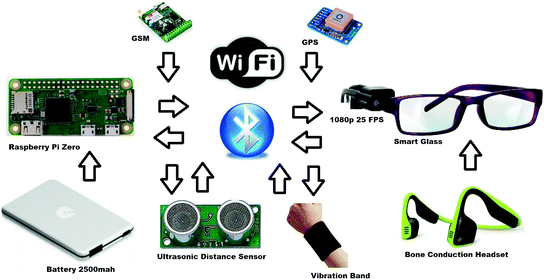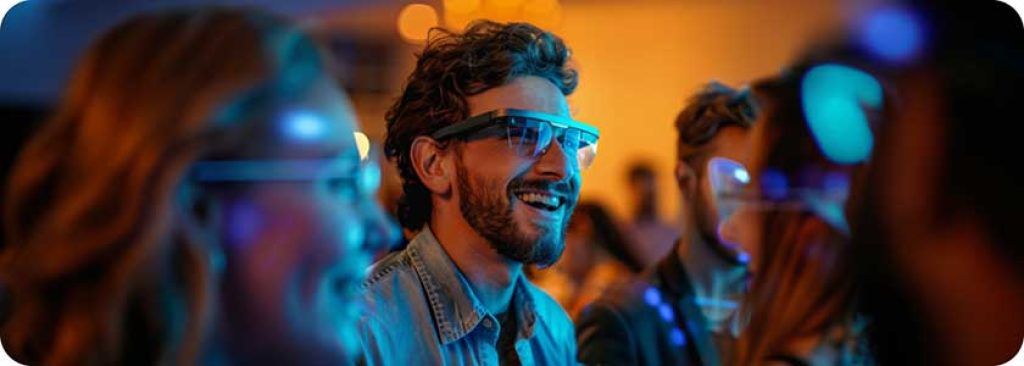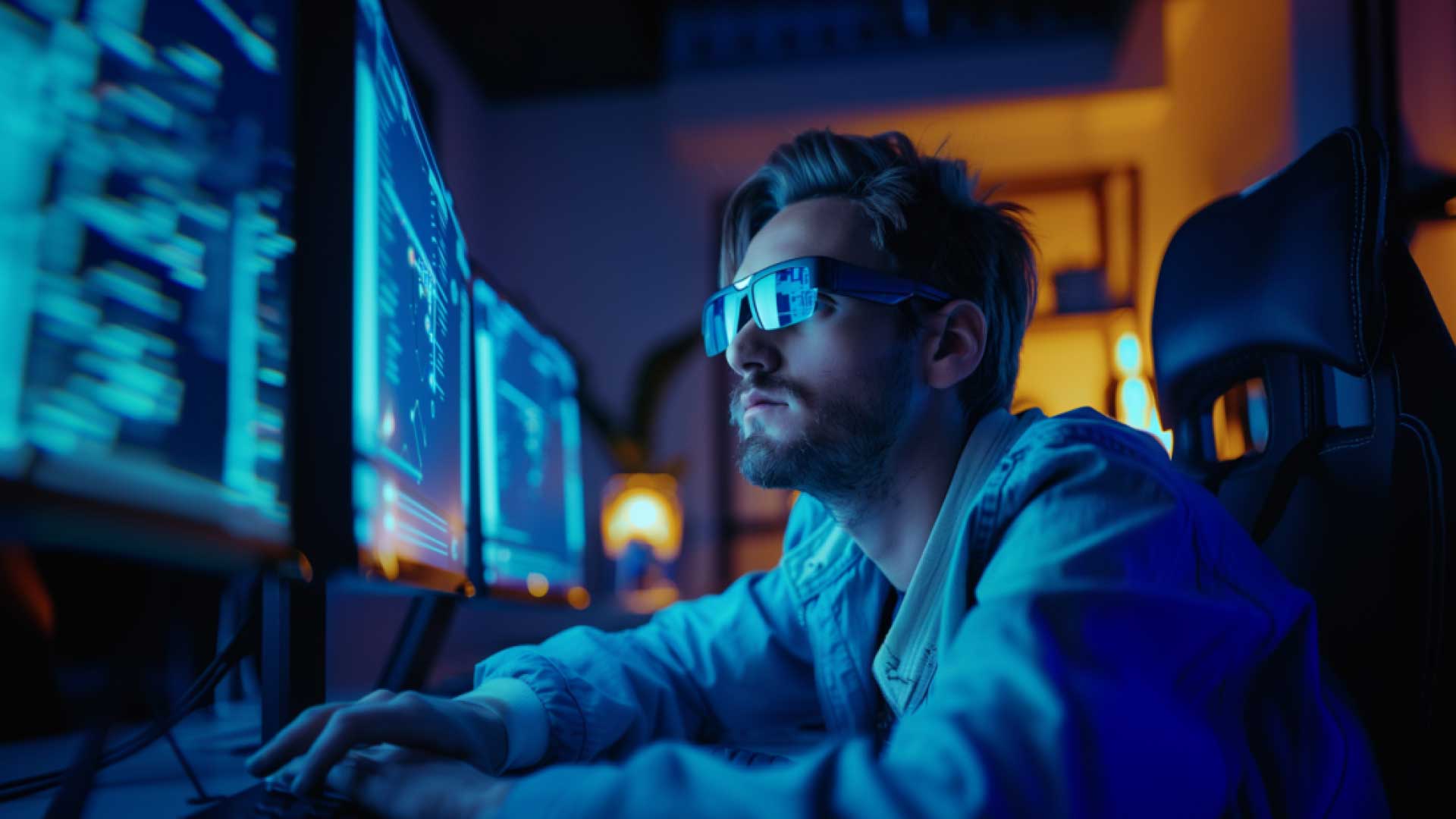Wearable Technology for Low Vision: Transforming How We Navigate the World
Wearable Technology for Low Vision: Transforming How We Navigate the World
Blog Article
Empowering Freedom With Assistive Technology for the Blind
The integration of assistive modern technology for people that are aesthetically impaired or blind stands for a significant development in fostering self-reliance and enhancing lifestyle. With a variety of gadgets-- from screen readers to innovative responsive tools-- these technologies not just facilitate navigation and interaction but likewise advertise social addition and involvement in different elements of life. As we explore the varied sorts of assistive tools and their real-world applications, it becomes clear that the influence is profound. The evolution of this modern technology increases critical inquiries about ease of access and future growths that call for more examination.
Recognizing Assistive Modern Technology
Although assistive modern technology has progressed substantially over the years, its essential objective stays the exact same: to improve the high quality of life for people with disabilities, particularly those that are visually damaged or blind. This innovation encompasses a broad variety of tools and devices that help with freedom and performance in day-to-day activities.
Assistive modern technology can be categorized right into low-tech and high-tech remedies, each made to fulfill details demands. Modern devices often consist of software program applications, specialized equipment, and adaptive tools that use sophisticated modern technology to provide assistance in various contexts. Conversely, low-tech services might include everyday items that are changed to boost availability, such as magnifiers or tactile markers.
The integration of assistive technology into the lives of individuals who are blind or visually hindered not just promotes freedom but also promotes social inclusion and involvement in expert and academic settings. By leveraging these modern technologies, customers can browse their surroundings, gain access to information, and connect properly, therefore enhancing their total lifestyle. Comprehending assistive innovation is crucial for caregivers, advocates, and specialists that aim to sustain individuals in maximizing their prospective and accomplishing higher independence.
Kinds Of Assistive Devices
Assistive tools for the visually damaged and blind are important tools that enhance daily obeying resolving specific obstacles experienced by users. These gadgets can be broadly categorized right into three primary kinds: optical tools, electronic devices, and sensory tools.

Sensory gadgets, such as Braille screens and tactile maps, supply alternate ways to receive info. Braille shows transform electronic message right into Braille, enabling individuals to check out through touch. Tactile maps offer spatial understanding through raised appearances and lines, permitting far better ecological recognition.
Together, these assistive devices equip people with visual problems to involve even more totally with their environments, advertising higher independence and self-confidence in daily activities.

Effect on Life
The integration of assistive innovation into the everyday lives of people that are blind or visually impaired significantly boosts their capability to interact and browse with the globe around them. Tools such as screen readers, Braille displays, and mobile applications assist in accessibility to details, allowing users to involve with electronic material, communicate successfully, and take care of everyday jobs individually.
Moreover, innovations like smart glasses and navigation apps provide real-time aid in find out this here strange atmospheres, boosting mobility and confidence. These tools make it possible for users to determine obstacles, reviewed signs, and also identify faces, therefore fostering a feeling of autonomy in public areas. In addition, home automation systems, which can be regulated through voice commands, permit individuals to handle their living atmospheres better, improving comfort and security.
The impact of assistive innovation expands past useful jobs; it advertises social inclusion and emotional well-being. By linking the void in between people and their surroundings, these modern technologies empower individuals to participate totally in community tasks, pursue educational opportunities, and participate in meaningful connections. Eventually, the development of assistive technology is critical in redefining the opportunities for individuals who are aesthetically damaged or blind, causing a much more comprehensive and easily accessible culture.
Success Stories and Testimonials

One more effective testimonial comes from Mark, a recent college graduate who utilized screen analysis software throughout his scholastic journey. This modern technology allowed him to access training course products and join conversations, eventually resulting in his successful shift right into the labor force. Mark debts assistive technology for encouraging him to achieve his career goals, stressing its function in leveling the having fun field for people with visual disabilities.
In addition, neighborhood facilities have reported boosted engagement in their programs many thanks to the introduction of available electronic systems. These platforms have actually made it easier for people to connect, share sources, and support each other. These success tales collectively emphasize the extensive impact of assistive technology in cultivating freedom, enhancing lifestyle, and damaging down barriers for the blind and visually damaged neighborhood.
Future Fads in Assistive Technology
Emerging modern technologies are poised to change the landscape of assistive tech for individuals that are visually impaired or blind. Innovations in expert system (AI) and artificial intelligence are enhancing the capabilities of tools, making it possible for even more instinctive user experiences. For example, AI-driven applications are increasingly able to identify items and read text out loud in real-time, providing individuals with beneficial details concerning their surroundings.
Furthermore, advancements in wearable modern technology are developing brand-new possibilities for independence. Smart glasses furnished with enhanced reality attributes can overlay crucial information onto the customer's field of view, helping with navigation and interaction with the atmosphere. Additionally, the assimilation of Web of Points (IoT) tools go to this site is enhancing availability in smart homes, allowing customers to control devices and obtain notices through voice commands or responsive user interfaces.
The growth of braille screens and tactile feedback systems is likewise increasing, advertising accessibility to electronic material and boosting communication. As these technologies proceed to advance, they guarantee to enhance daily living, academic chances, and employment prospects for individuals with visual impairments. Constant cooperation between engineers, customers, and campaigning for teams will certainly be vital in ensuring these innovations satisfy the requirements of the community effectively.
Conclusion
Finally, assistive innovation plays an essential role in improving the freedom of people that are blind or visually impaired. By offering crucial devices and resources, these technologies assist in enhanced communication, navigation, and access to info, thereby cultivating freedom and self-confidence. The transformative influence of assistive tools not only advertises reliable interaction with the environment but additionally motivates social inclusion and engagement in different aspects of life, inevitably equipping users to grow within their communities.
The combination of assistive innovation for individuals that are visually damaged or blind represents a considerable advancement in fostering self-reliance and boosting high quality of life.The assimilation of assistive innovation right into the lives of people that are blind or aesthetically harmed not only advertises autonomy but additionally cultivates social incorporation and involvement in academic and professional environments. Ultimately, the development of assistive innovation is crucial in redefining the possibilities for people who are blind or visually damaged, leading to a more comprehensive and easily accessible society.
Several people that are visually impaired or blind have actually shared motivating success tales that highlight the transformative effect of assistive innovation on their lives.In conclusion, assistive technology plays a critical duty in improving the self-reliance of individuals who are blind or visually impaired.
Report this page